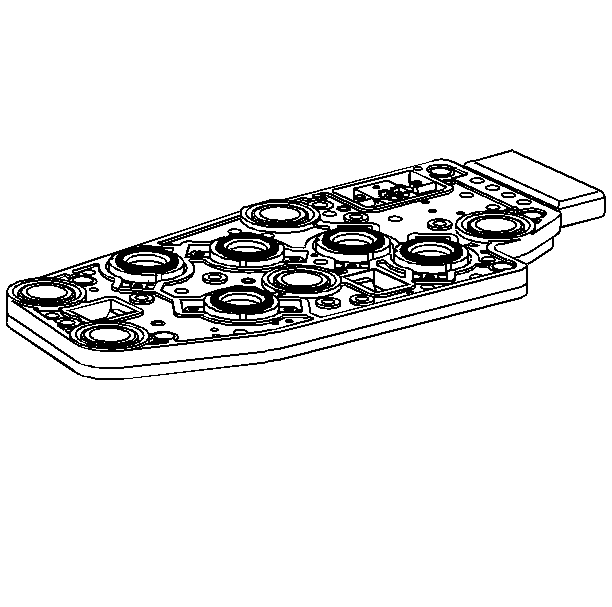
Important: Seven valid components and two invalid combinations are available from
the PSA: Valid combinations for Circuit A, B and C are shown below. Invalid
combinations are the following:
• A=0V, B=0v AND C=0V • A=0V, B=12v AND C=0V
The transmission fluid pressure switch assembly (PSA) is a set of five pressure switches on the valve body that sense whether fluid pressure is present in five different valve body passages. The combination of which switches are open and closed is used by the PCM in order to determine actual manual valve position. The PSA assembly, however, cannot distinguish between PARK and NEUTRAL because the monitored valve body pressures are identical in both cases.
The switches are wired to provide three signal lines that are monitored by the PCM. These inputs are used to help control the line pressure, the torque converter clutch apply and the shift solenoid operation. Voltage at each of the signal lines is either zero or twelve volts.
In order to monitor the PSA assembly operation, the PCM compares the actual voltage combination of the switches to a PSA combination chart stored in its memory. If the PCM sees one of two 'illegal' voltage combinations a code 028 will result. A Code 28 indicates a short circuit condition in either the range signal A or the range signal C circuits.
The PSA assembly signal voltage can be measured from each pin-to-ground and compared to the combination chart. On the transmission wiring harness, pin N is 'range signal A', pin R is 'range signal B' and pin P is 'range signal C'. With the wiring harness connected and the engine running, a voltage measurement of these three lines will indicate a high reading (near 12 volts) when a circuit is open, and a low (zero volts) when the circuit is switched to ground.
The transmission temperature sensor is part of the transmission fluid pressure switch assembly.
